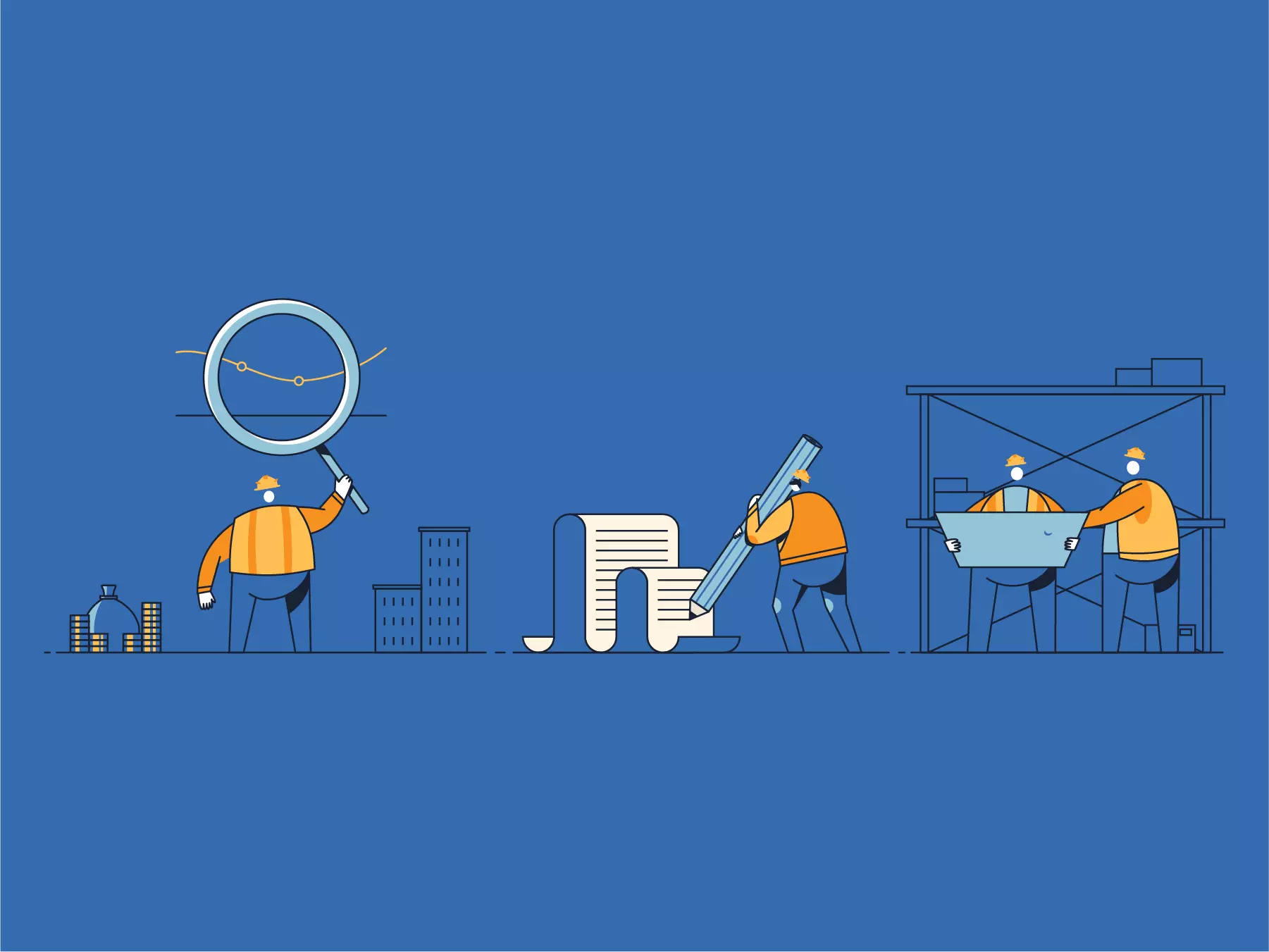Risks in the construction industry are inevitable. This is because the construction industry is complex, with many moving parts. According to a report, nine out of every ten construction companies are affected by cost overruns. In addition, the report also indicates that 61% of construction projects are never completed on time.
When a construction project is not completed on time, it can have financial ramifications for both the contractor and the project owner. Let us assume that the construction project is being implemented using a credit facility. In this case, a delay in completing the project will cause the project owner to pay premiums for longer.
Similarly, contractors might be penalized by the project owner if they cause a delay. Therefore, it is in the interest of both parties to ensure that construction risks are identified on time. Once these risks have been identified, mitigation measures must be put in place and implemented.
Tips for identifying infrastructure risks
To identify infrastructure risks, project managers must use a combination of techniques. The first technique that every project manager should use is historical data. Remember, history repeats itself. Therefore, contractors can use historical data to predict future risks. The accuracy of historical data will depend on the quality and quantity of the data analyzed.
For example, if you were building a dam and a similar project was affected by legal lawsuits from residents. There is a likelihood that the current project will also be affected by legal lawsuits. Therefore, as a mitigation measure, the project manager must ensure that all legal hurdles are dealt with before construction begins. Other ways of identifying infrastructure risks are:
Use technology
Technologies such as https://www.alicetechnologies.com/solutions/for-infrastructure are currently being used to implement high-value infrastructure projects. The platform identifies risks during the preconstruction phase, making it possible for contractors to build risk-free. If there is a risk, the platform will create multiple options that contractors can use to mitigate them.
Technology, such as virtual reality, is currently being used to identify design risks before they affect the project. Virtual reality creates an immersive 3D experience of how a finished structure will look. This technology allows designers to identify design errors before the project breaks ground.
Apart from identifying design errors, virtual reality can also simulate how designs will look when a change order is made.
Brainstorm risks
Another strategy to identify infrastructural risks is to brainstorm about them. If not correctly done, it will become difficult to identify threats affecting the project. The best way to brainstorm is to develop a list of questions grouped under an objective.
For example, a project manager needs to brainstorm possible risks that can affect a schedule if the objective is to develop it. The question here will be, “What are the five biggest risks that will affect a construction schedule?” This way, the project manager will be able to identify risks.
Interview stakeholders
Project managers can identify risks by interviewing stakeholders. This should begin with senior management and end with junior management. The questions asked must be specific and relevant to the stakeholder’s expertise. For example, architects can be asked about design flaws and how change orders affect the construction project.
Contractors can ask senior management about financing to know whether or not financial risks are a concern. Subcontractors can be asked about the practicability of their work and what risk they think can affect the project. The goal of this exercise is to interview as many stakeholders as possible.
Use a checklist
A checklist is a document that contains a list of items that must be cross-checked for a given purpose. Contractors can identify risks by coming up with a checklist of common threats that they believe will affect their construction project. This checklist needs to be based on historical data.
If a risk is not likely to affect the infrastructure project, it should be canceled. This way, the contractor will know the risks likely to affect the project and develop measures that minimize their effects.
Key risks in infrastructure projects
Large infrastructure projects are affected by external risks. External risk is when a local community goes to court to stop a company from implementing a project. Other external risks include changing local and national laws. Other major risks are:
Environmental risks
Environmental risks are out of the control of the contractor. They are caused by environmental laws. The laws require construction companies to follow certain standards. For example, an environmental law might require companies to have an environmental assessment report before building in a particular area.
In other cases, the law might require construction companies to use alternative construction methods, increasing costs.
Financial risks
Financial risks occur when the project owner cannot raise the required money in time. As a result, the entire project stalls midway. Financial risks can also occur when the contractor undervalues the project. As a result, the provided budget gets depleted before the contractor finishes work.
In this case, the contractor will be forced to bear responsibility, especially if he has agreed to complete the project within the given budget.
Legal risks
These are caused by third parties who sue the construction company for several reasons. The company can be sued by its workers for poor pay or working conditions. Environmental activists can also sue construction if they believe the company is damaging the environment.
Organizational risks
Organizational risks are caused when the construction company employs unqualified workers. Unqualified employees are a liability because they are unproductive and can cause costly errors.
In conclusion, contractors must identify threats before the construction project breaks ground. This is because it is less costly to deal with these threats early in the construction stage when compared to dealing with the threats when construction has already started.

